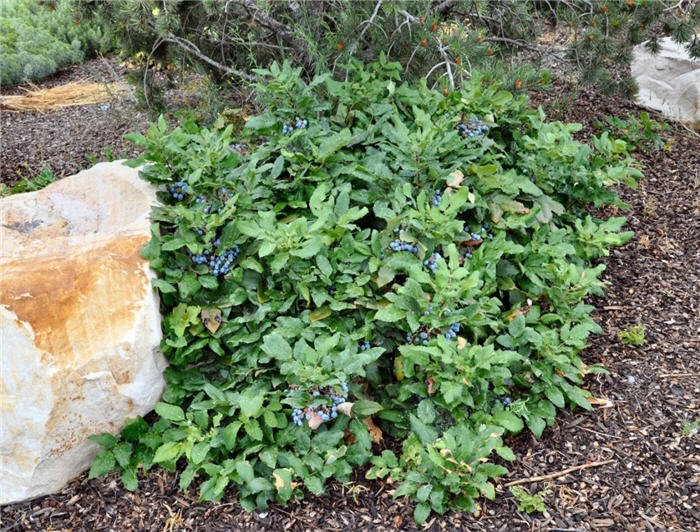| Botanical Name: Mahonia repens | |
| Common Name: Creeping Mahonia |

-
Anatomy
-
Culture
-
Design
Plant Type
Broadleaf Evergreen, Shrub, Ground cover
Height Range
1-3'
Flower Color
Yellow
Flower Season
Spring
Leaf Color
Bronze, Green
Bark Color
Grey
Fruit Color
Purple
Fruit Season
Summer, Fall, Persistent
Sun
Half, Shade
Water
Low
Growth Rate
Moderate, Slow
Soil Type
Sandy, Clay, Loam, Rocky, Unparticular
Soil Condition
Average, Rich, Well-drained, Dry
Soil pH
Acid, Neutral, Basic
Adverse Factors
Attracts Bees, Invasive, Thorns/Spines
Design Styles
English Cottage, Mediterranean, Ranch, Spanish, Woodland
Accenting Features
Fall Color, Fragrance, Showy Flowers
Seasonal Interest
Winter, Spring, Summer, Fall
Location Uses
Background, Shrub Border, Foundation, Raised Planter
Special Uses
Erosion Control, Mass Planting, Fire Resistant, Naturalizing, Small Spaces
Attracts Wildlife
Birds
Photographer:
-
Description
-
Notes